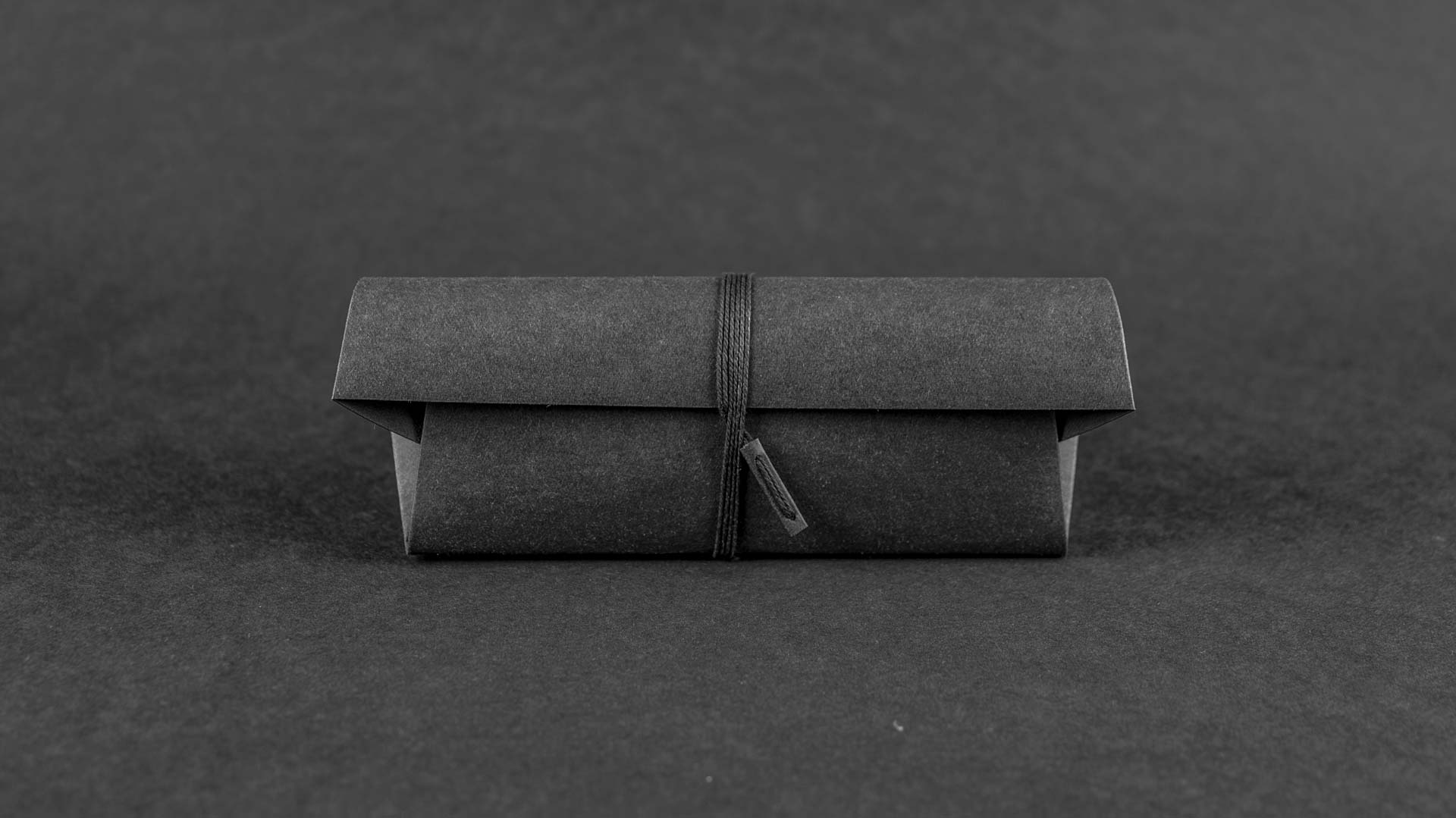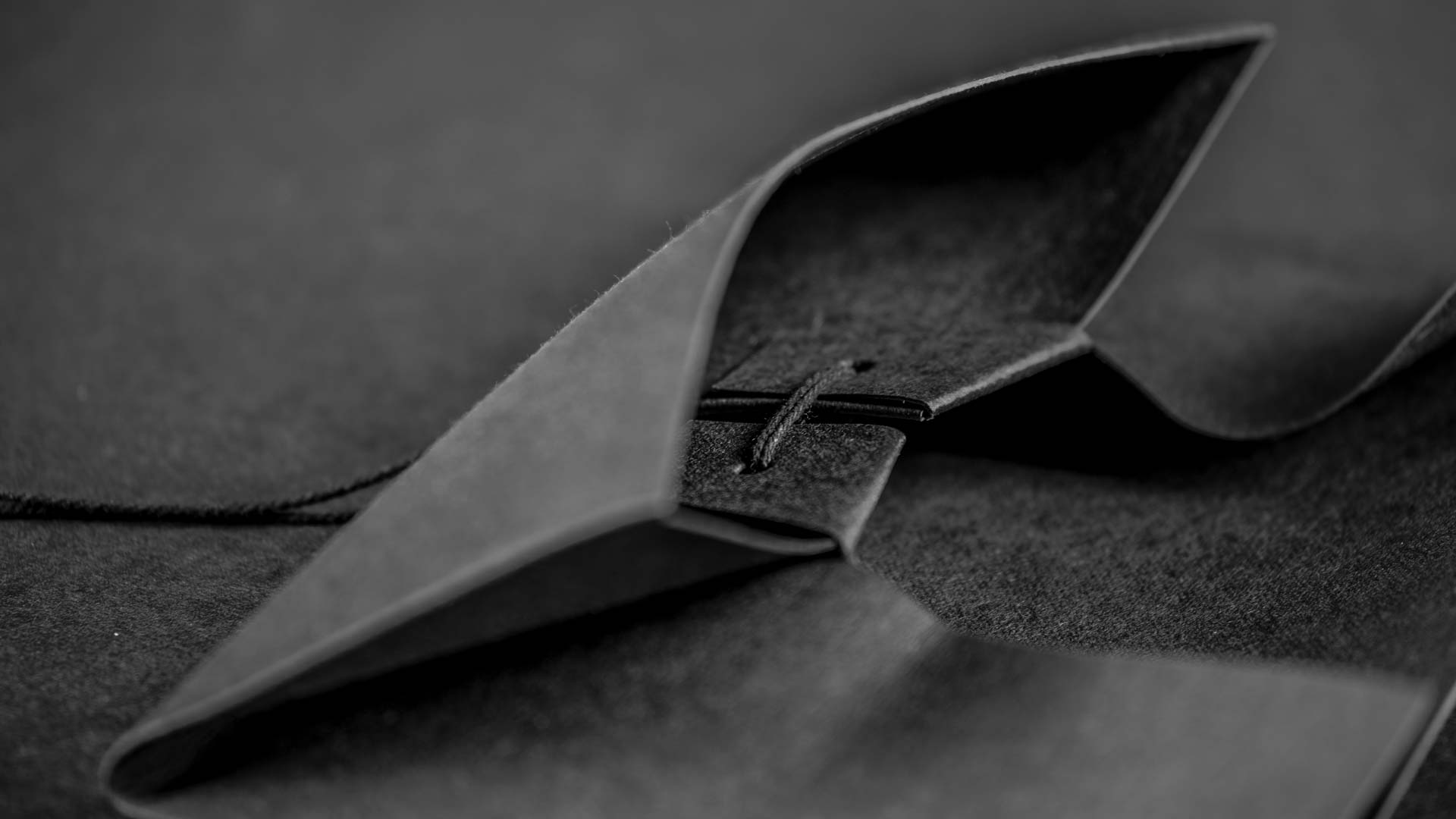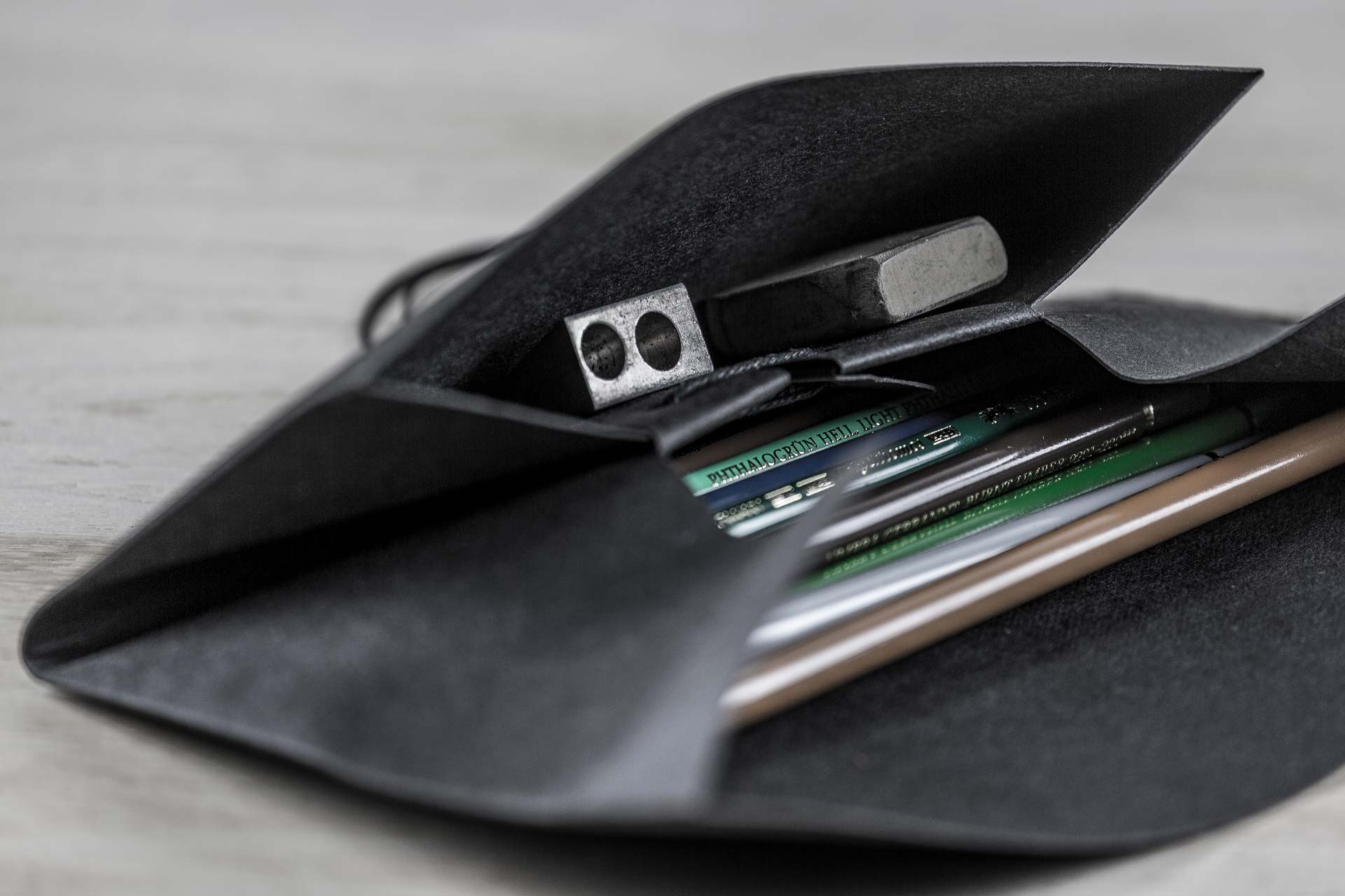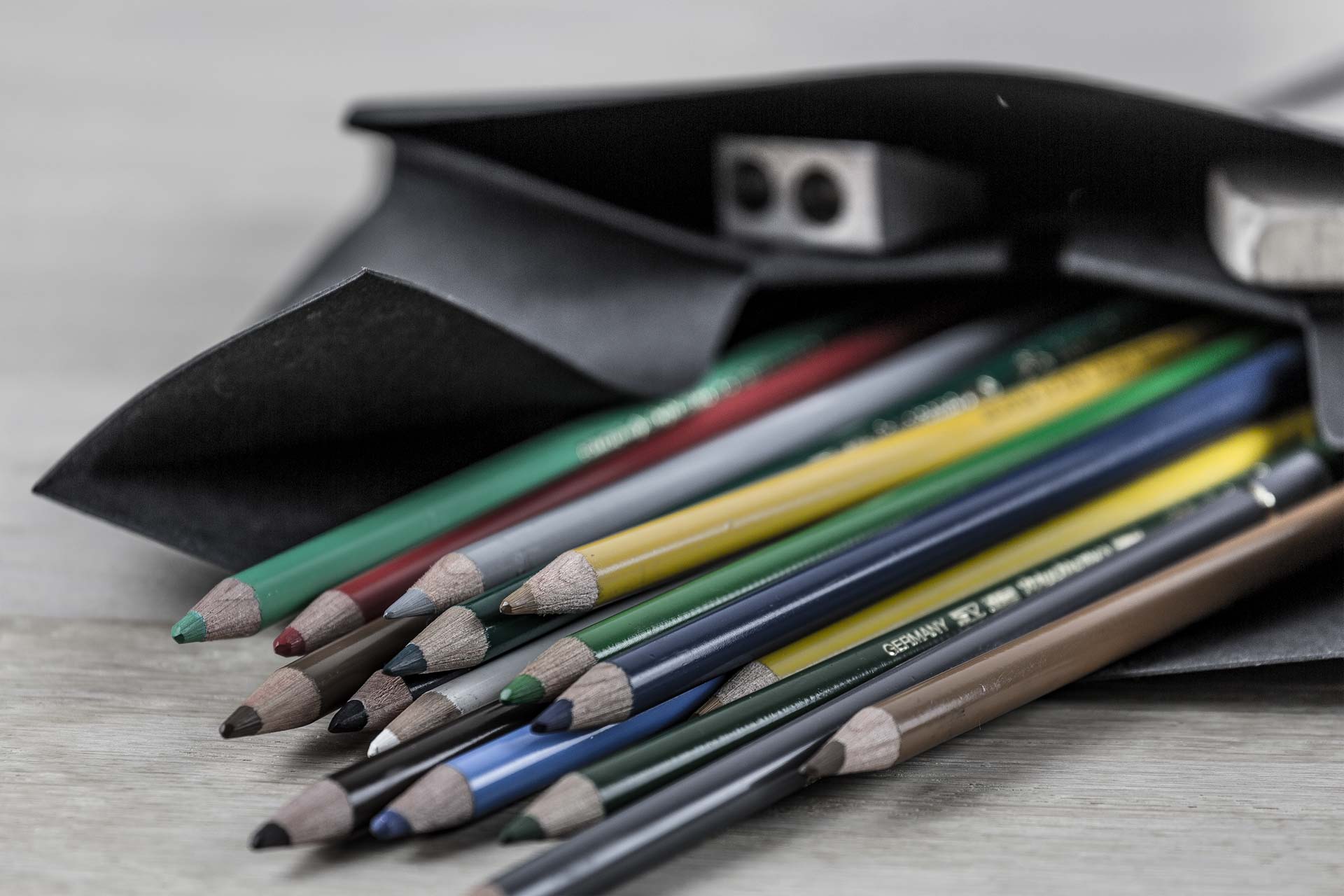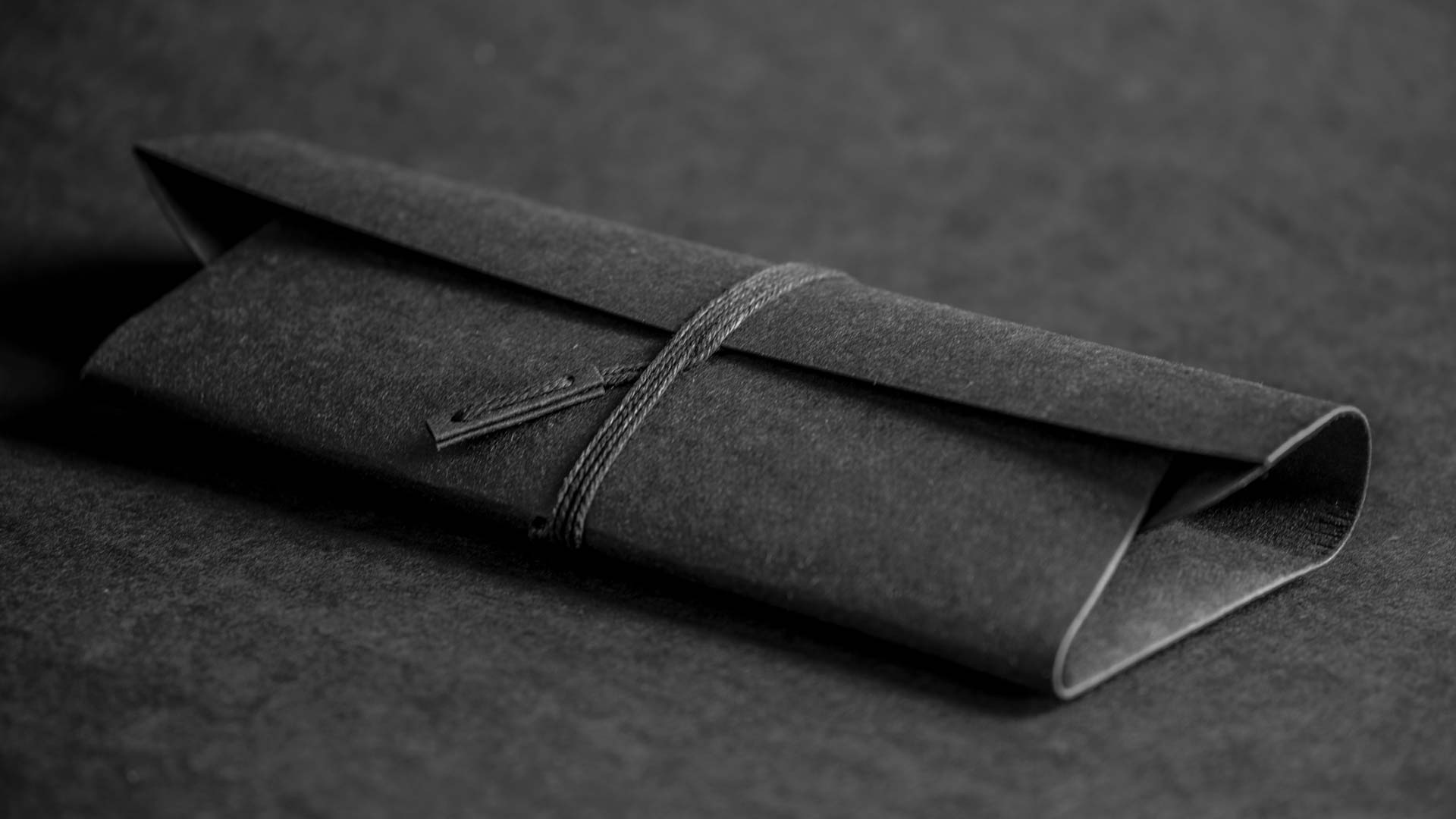ORU
• federtasche •
Material
• Zellulose-Latex-Mischung
• Baumwollschnur gewachst
Maße
• L x B x H in mm, 240 x 80 x 35
>> durch Falten entsteht aus einer zweidimensionalen Fläche ein geschlossenes, dreidimensionales Objekt <<
Werden zwei Seiten einer Fläche zusammengeführt entsteht ein Schlauch. Wird dieser an einer beliebigen Stelle geknickt erhält man zwei Taschen. Der offene Schlauch wird zu einem geschlossenen Körper, wenn die Enden ineinander geschoben werden. Unterschiedlich große Öffnungen erleichtern das Zusammenschieben und geben dem Ganzen eine trapezförmige Grundform. Das ist das Grundprinzip der Federtasche ORU – durch Falten entsteht aus einer zweidimensionalen Fläche ein dreidimensionales, geschlossenes Objekt.
>> das Material, die Faltkonstruktion und das spezielle Ritual des Öffnens und Schließens orientieren sich an der japanischen Ästhetik und Philosophie <<
Die Federtasche besteht aus einer Zellulose-Latex-Mischung, die sich haptisch zwischen Papier und Leder bewegt. Sie ist ohne Nähte aus einem Stück gefaltet, die zwei Fächer bieten Platz für Schreib- und Zeichenutensilien sowie Zubehör. Verschlossen wird die Tasche durch das Ineinanderschieben der beiden Fächer, umwickelt mit einer Baumwollschnur. Das Material, die Faltkonstruktion und das spezielle Ritual des Öffnens und Schließens, orientieren sich an der japanischen Ästhetik und Philosophie.
ORU
• pencil case •
material
• cellulose latex composite
• cotton cord waxed
dimensions
• L x W x H in mm, 240 x 80 x 35
>> a three dimensional closed object born from a single two dimensional surface <<
Pulling two edges of a flat surface towards each other forms a tube. Folding it again at any point creates two pockets. The open tube becomes a closed body when its two ends are pushed into one another. The tube’s slightly trapezoidal shape allows one side to easily fit inside the other. This is the basic constructive principle of the pencil case ORU – a three dimensional closed object born from a single two dimensional surface.
>> the material, the folded construction, and the specific ritual of opening and closing, are based on Japanese aesthetics and philosophy <<
The pencil case is made from a cellulose-latex composite haptically feeling between paper and leather. It is folded from one piece without seams, the two compartments offer space for writing / drawing utensils and accessories. Fitting the two compartments into one another and then wrapping with a cotton cord closes the case. The material, the folded construction, and the specific ritual of opening and closing, are based on Japanese aesthetics and philosophy.



